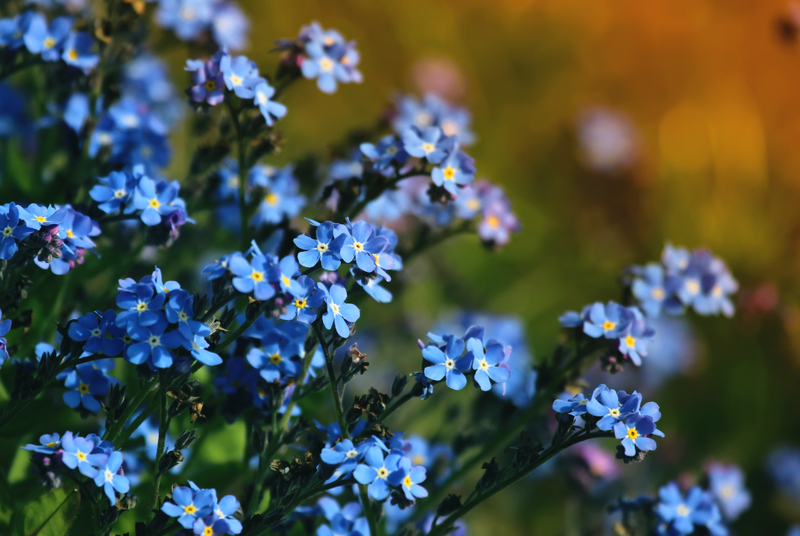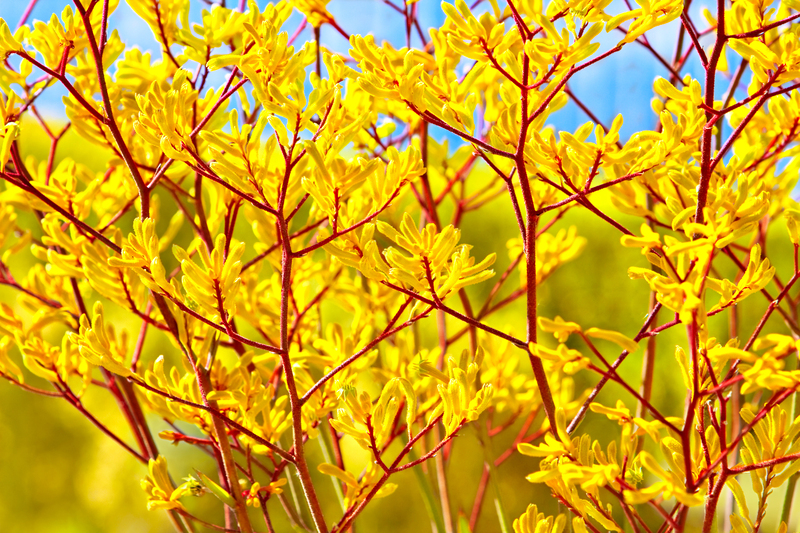Love Your Orchids: Care Strategies That Work
Posted on 13/06/2025
Love Your Orchids: Care Strategies That Work
Orchids are among the most captivating, exotic, and rewarding houseplants you can grow. Their stunning blooms, intricate patterns, and enchanting fragrances have fascinated plant lovers for centuries. However, their exotic reputation sometimes comes with a myth: that orchid care is difficult and finicky. If you've ever been mystified by how to care for your orchids or wondered about the secrets behind their long-lasting beauty, this comprehensive guide is for you. Discover expert strategies to love your orchids and help them thrive year after year.
Why Orchids Are Worth Loving
With over 25,000 species and a wide variety of hybrids, orchids offer endless possibilities for plant collectors and casual growers alike. These versatile plants not only enhance indoor decor but also improve air quality and boost your mood. When provided with the right care, orchids can bloom repeatedly and even live for decades.
The Allure of Orchids
- Exquisite Blooms: Orchid flowers come in mesmerizing shapes, sizes, and colors.
- Long-Lasting Flowers: Unlike most other houseplants, many orchid species bloom for weeks or even months.
- Air Purification: Certain orchids can filter indoor air, keeping your home environment fresh and clean.
- Unique Fragrances: Some orchids, such as the Oncidium "Sharry Baby," produce sweet, chocolatey scents.

Understanding the Basics of Orchid Care
To truly love your orchids, it's crucial to understand their basic needs. Orchids may seem delicate, but with the right strategies, you can create a perfect environment and encourage consistent, lush growth.
Choose the Right Orchid
Not all orchids are created equal. Beginners should start with varieties known for their resilience:
- Phalaenopsis (Moth Orchid) - perhaps the easiest and most forgiving.
- Cattleya - known for their bold colors and resilience.
- Dendrobium - hardy and adaptable to multiple environments.
Pro Tip: Research your orchid's variety to tailor care recommendations accordingly.
The Perfect Place: Light and Temperature for Orchid Growth
Proper light and temperature are essential for vibrant orchids. Too much or too little can prevent blooming or even harm the plant.
- Light: Orchids thrive in indirect sunlight--think east- or west-facing windows. Too much direct sun risks leaf scorch, while insufficient light will limit flowering.
- Temperature: Most orchids prefer daytime temperatures between 65?F and 75?F (18?C-24?C) with a nighttime drop of 10-15?F (5-8?C). This boost-fluctuation triggers blooming.
Avoid placing orchids near heat registers, air-conditioning vents, or drafty windows, as sudden temperature changes can stress them.
Watering Wisdom: How Much & When?
Orchids have unique roots that need moisture--but not too much. Overwatering is the most common cause of orchid woes. Here's how to keep your plant hydrated without risking root rot.
Recognize the Orchid's Watering Needs
Stick your finger about an inch into the potting mix. If it's dry, it's time to water; if it feels damp, wait a day or two. Most orchids do well with once-a-week watering, but this can change depending on humidity, temperature, and pot size.
- Water early in the day to allow foliage to dry before night (preventing fungal diseases).
- Use room-temperature water, ideally rainwater or distilled water if your tap water is highly chlorinated or softened.
- Let water run through the pot completely, then let excess drain--never let orchids sit in water!
Remember: Tolerate slight underwatering over overwatering. The roots should be plump and green when wet, silvery-gray when dry.
Humidity: The Secret Ingredient
Most orchids hail from tropical jungles with high humidity (50-70%). You can boost indoor humidity by:
- Grouping orchids together.
- Using a humidity tray (a shallow dish filled with pebbles and water) beneath the orchid pot.
- Running a humidifier during winter months.
- Misting leaves in the morning, but avoid soaking the crown to prevent rot.
Potting and Repotting: Choosing the Right Medium
Orchids aren't like other houseplants--they need well-draining, airy potting media to mimic their native environments. A good orchid mix might include bark, sphagnum moss, charcoal, and perlite.
When and How to Repot Your Orchid
- Repot every 1-2 years or when the potting medium decomposes (becomes mushy or smells bad).
- Use a pot just big enough for the root system--a snug fit encourages better blooms.
- Gently remove old potting mix, trim any dead or mushy roots, and place in fresh media.
Pro Tip: Always sterilize your pruning tools to reduce the risk of infection.
Which Pot to Choose?
Clear plastic pots are ideal for beginners, allowing you to monitor root health and moisture levels. Terra-cotta pots can also work, but tend to dry out more quickly.
Feeding and Fertilizing Your Orchids
Orchids need nutrients--but not in excess. Using the right orchid fertilizer ensures maximum growth and vibrant flowers.
- Use a balanced, water-soluble fertilizer (20-20-20 or specifically labeled for orchids) every 2-4 weeks during active growth.
- Dilute the fertilizer to half or quarter strength to avoid root burn.
- Flush the pot with clear water once a month to prevent salt buildup.
During dormant periods, reduce feeding frequency or stop fertilizing altogether until active growth resumes.
Pruning, Grooming, and Keeping Orchids Healthy
How to Prune Orchid Spikes
- For Phalaenopsis orchids, cut the spike above a node ("eye") after flowering to encourage a new shoot.
- For other orchids, trim flower spikes at the base after blooms fade.
Grooming for Health
- Remove dead leaves and sheaths to prevent pests.
- Keep leaves clean and dust-free with a damp cloth (never use leaf shine spray).
Pest and Disease Prevention
Common pests include mealybugs, aphids, and spider mites. Check your plant weekly and treat with insecticidal soap or neem oil if necessary. Avoid overwatering to reduce risk of root rot. If fungal or bacterial spots appear, isolate the plant and remove affected tissue with sterilized scissors.
Encouraging Orchids to Rebloom
One of the joys of orchid ownership is coaxing them to rebloom. Here's how to increase your odds:
- Ensure a day-night temperature drop of at least 10?F (5?C) for several weeks to trigger blooming.
- Maintain steady, moderate watering and don't move the plant abruptly.
- Check if your orchid needs a rest period--certain types, like Dendrobiums, thrive after a brief dry spell.
Patience and consistency are your best friends.
Common Orchid Care Mistakes to Avoid
- Overwatering or letting roots sit in soggy media.
- Placing orchids in direct sunlight--leaves scorch easily.
- Fertilizing too often or with too strong a solution.
- Ignoring root health--always check for rot and decay during repotting.
- Neglecting humidity, especially in heated rooms.
Signs Your Orchid Needs Attention
- Leaves turning yellow or limp--often a sign of overwatering.
- Wrinkled leaves or roots--generally from underwatering.
- No blooms for more than a year--likely insufficient light or lack of temperature fluctuation.

Orchid Care FAQ
Is orchid care different during winter?
Yes. Orchids may require less water in winter due to slower growth, reduced daylight, and drier indoor air. Adjust watering, maintain humidity, and keep away from cold drafts.
How long do orchid blooms last?
Depending on the variety, orchid blooms can last from two to twelve weeks. Moth orchids (Phalaenopsis) are famous for blooms lasting up to three months!
Why are my orchid roots growing outside the pot?
These are aerial roots and completely normal for healthy orchids. They help absorb moisture and should not be trimmed unless dead or dried. Keep them clean and mist occasionally.
Show Your Orchids Some Love--Final Thoughts
Orchids aren't mysterious or impossible--they're simply unique. By learning to speak their language with the right care strategies, you'll be rewarded with spectacular blooms and a thriving, long-lived plant. Love your orchids by giving them what they truly need: the right light, moisture, humidity, and periodic feeding. Avoid common mistakes, be observant, and enjoy the process.
Whether you're an experienced orchid enthusiast or a devoted beginner, following these proven methods will ensure that your orchids are not just surviving, but absolutely flourishing. Ready to bring stunning blossoms into your home? Show your orchids some love, and they'll return the favor tenfold with beauty that endures.
Key Takeaways for Loving Your Orchids
- Choose beginner-friendly varieties for the easiest care.
- Provide bright, indirect light and proper temperature.
- Water consistently but let roots breathe--avoid soggy media.
- Repot every 1-2 years and keep roots healthy.
- Increase humidity for happier, healthier orchids.
- Fertilize lightly and regularly when orchids are growing.
- Inspect regularly for pests and diseases--act quickly if spotted.
Start applying these strategies today and fall in love with your orchid collection all over again!

